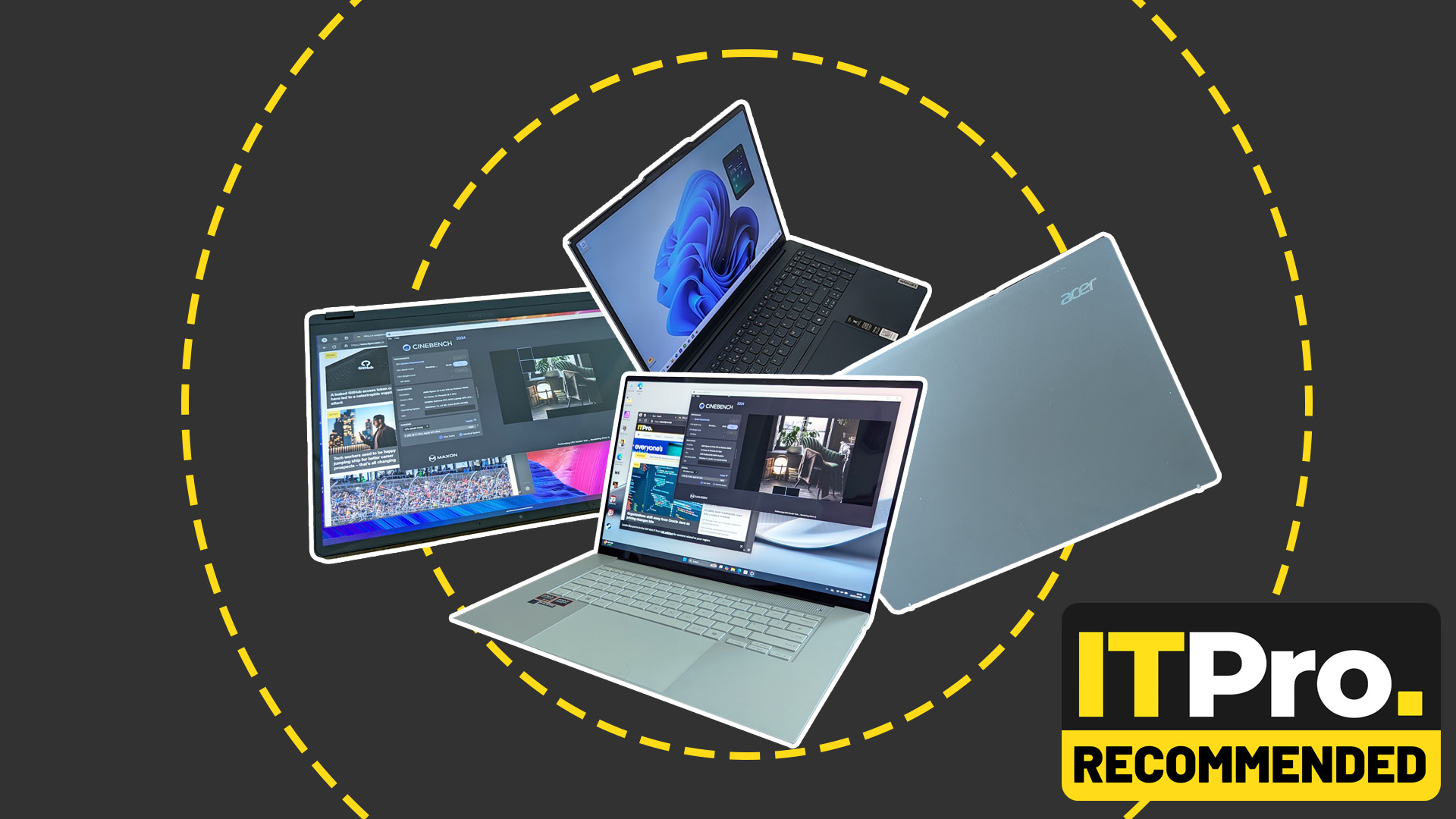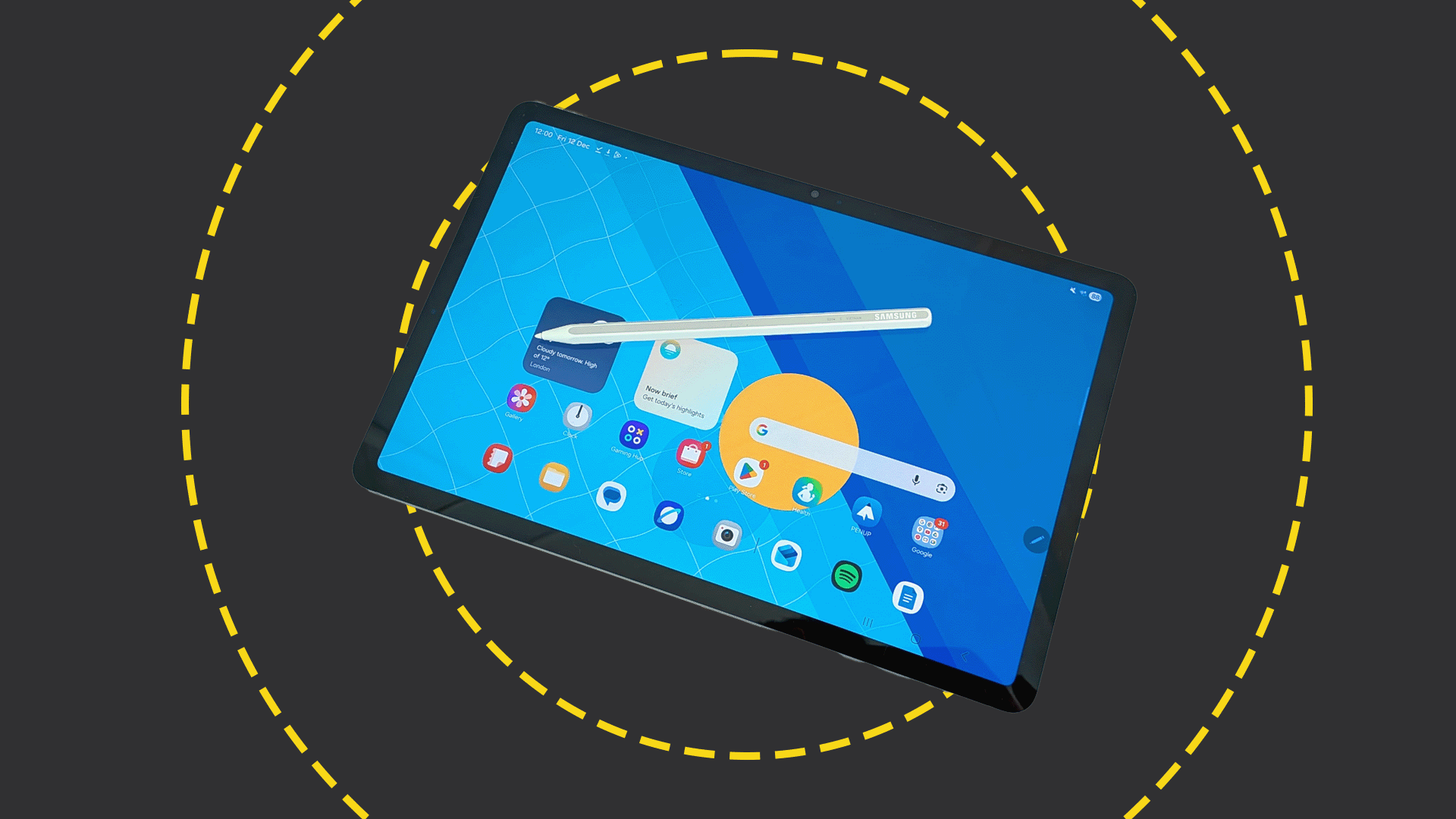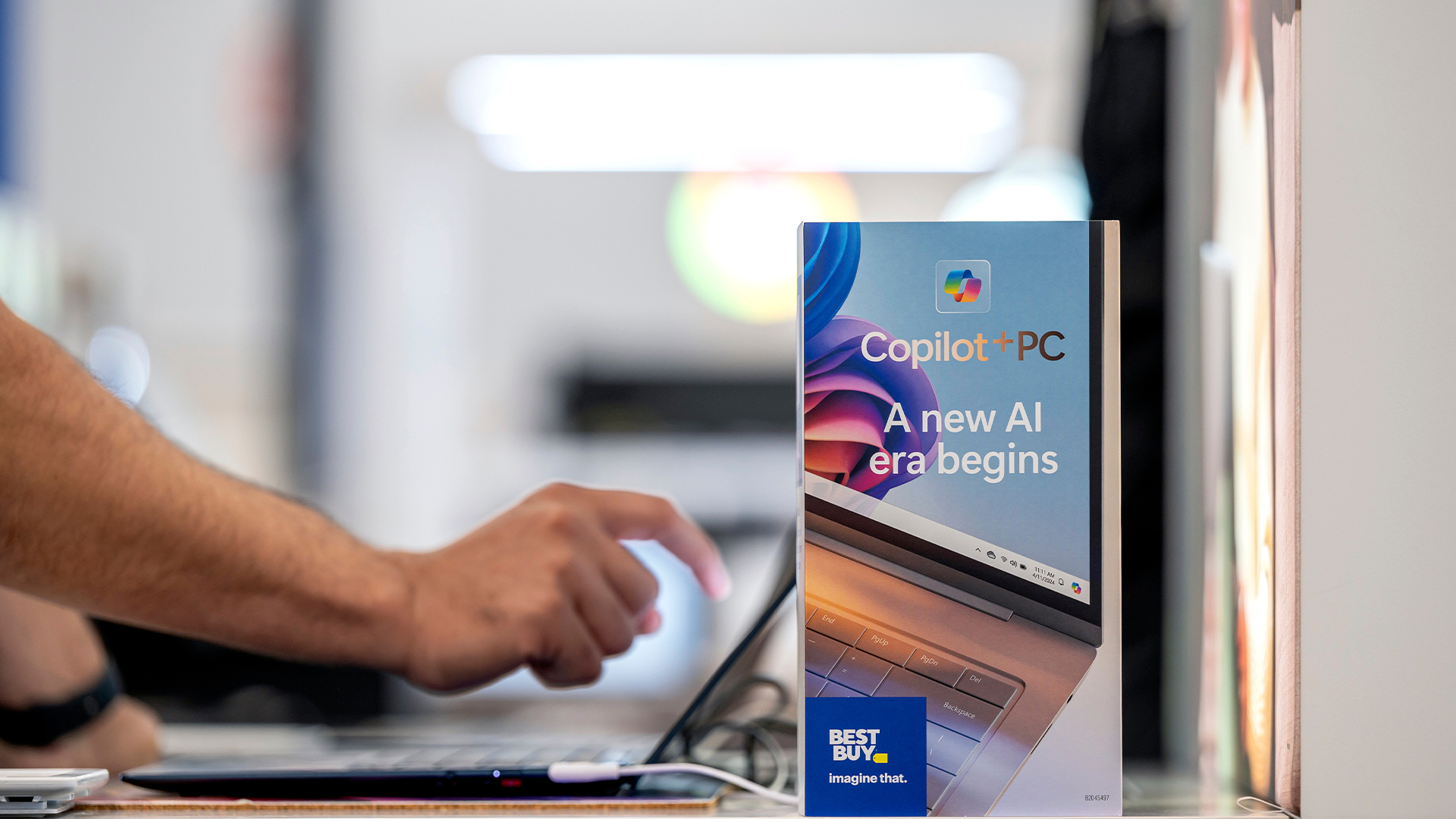Best business laptops: Top business notebooks from Apple, Asus, Dell, and more
Looking for the best business laptops? Here’s our pick of the best machines around


When it comes to kitting out an office or workforce, you should aim for the best business laptops available. However, this doesn't necessarily mean the most expensive, the newest, or even the most powerful. In fact, it's more about knowing what is best for your organization and its workforce and finding the best machines to suit.
Do you need NPU-powered machines? Are you a Windows or macOS organization? What's your policy on Copilot buttons? Over the last 12 months, we've rigorously tested and reviewed laptops from Apple, Dell, Lenovo, HP, and more. Here is our pick of the bunch.
What to look for in a business laptop
2024 was a stellar year for laptops with the arrival of impressive new chipsets from Qualcomm, giving Windows on ARM a new lease of life. New x86 processors from both Intel, in the form of Lunar Lake, and AMD, in the form of Zen 5. And the continuing evolution of Apple's own M-series ARM processors.
Spurred on by Qualcomm parking its tanks on their lawn, Intel and AMD both trotted out new processors promising heightened levels of efficiency and AI cleverness and the early indications are that they have done just that: Processors like the Lunar Lake Core Ultra 9 288V in the Asus Zenbook S14 and AMD Ryzen AI 9 HX 370 in the Zenbook S16 are every bit as efficient as the ARM chips used by Qualcomm and Apple.
The other Big Thing in 2024 has been the arrival of neural processors designed to run local AI tasks without detracting from overall system performance. The jury is still out on the necessity of these neural cores but as more programs arrive that make use of them – Windows Recall, the useful look-back feature that was postponed over privacy fears, should launch soon – they may start to justify their existence more strongly.
With that in mind here is our pick of the six best laptops that have crossed our desks in the last 12 months, from ultra compacts with amazing battery life to heavyweight workstations for the hardcore user and a few things in between.
Best business laptops
Asus Vivobook S16 (S5606)
Our expert review:
Specifications
Reasons to buy
Reasons to avoid

The Asus Vivobook S16 faces stiff competition in its marketplace, but packs a mighty punch that makes it worth the gamble.
Facing off against the MacBook Pro, Surface Laptops, or Samsung's GalaxyBook 5, the Vivobook S16 is a cost-conscious option in a domain that's dominated by pricey competitors, coming in at under $1,300.
Pricing isn't all it has going for it, however. The Vivobook S16 boasts a gorgeous 120Hz display fitted on a super lightweight chassis weighing in at just 1.5kg - that makes it significantly lighter than a 16.2-inch Apple MacBook Pro.
Notably, despite its dainty size, it's a surprisingly robust device, with military-grade resistance to shock, particle ingress, and even climatic changes.
In terms of ports and connectivity, it also scores well, featuring two Thunderbolt 4 ports, an HDMI 2.1 video output, two 5Gbit/sec USB-A ports, and a MicroSD card reader. As with the Yoga Slim 7i, users will be forced to use one of the Type-C ports to charge the device.
Performance-wise it also packs a punch. The Vivobook S16 comes with the choice of an Intel Core Ultra 7 155H processor or an Intel Core Ultra 9 185H.
For more information, check out our full Asus Vivobook S16 review.
The Lenovo ThinkPad X1 Carbon Gen 13 Aura Edition
Our expert review:
Specifications
Reasons to buy
Reasons to avoid

The Lenovo ThinkPad X1 Carbon Gen 13 Aura Edition is ranked among one of the best compact business laptops available on the market right now – but if you're looking for a MacBook Air competitor, you'll be left wanting. It's an excellent, lightweight laptop, weighing in at just 982g and measuring 313 x 215 x 15mm, and making it great for remote workers or those short on desk space. For comparison, that makes it lighter than the 13.6-inch MacBook Air.
In terms of ports, the ThinkPad X1 also ranks highly, offering users two Thunderbolt 4 ports as well as a 5 Gbps USB-A port. This is matched by a secondary USB-A port, a 3.5mm audio jack, and an HDMI 2.1 video output port.
What it lacks on this front, however, is a memory card slot. The omission of this is a major inconvenience. Similarly, there's no option for a secondary SSD, meaning users are left with the standard 1TB M.2 2280 SSD.
With regard to performance, the X1 does stack up well against competitors in the space, offering users the choice of 12 different Intel Core Ultra S2 processors. ITPro testing of a Core Ultra 7 258V device returned solid benchmark results, scoring 6,909 in the PCMark10 test, 245 in ITPro's bespoke 4K multi-media test, and 2,725 and 10,937 in the GeekBench 6 single-core and multi-core tests. Notably, the 4K test result scored just two points below the M4 MacBook Air, highlighting it as a great laptop for everyday activities.
For more information, read our full Lenovo ThinkPad X1 Carbon Gen 13 Aura Edition.
RELATED WHITEPAPER

Microsoft Surface Laptop 7
Our expert review:
Specifications
Reasons to buy
Reasons to avoid

Microsoft's latest partnership with Qualcomm worked out better than anyone would have predicted given the horror that was Windows RT. In a stroke, Windows laptops started to deliver the sort of battery run times that even Apple laptops could only dream about while the expected issues of running x86 Windows software under ARM emulation largely failed to materialize.
The first crop of Snapdragon-X laptops featured some high-quality hardware like the Acer Swift 14 AI, the HP Omni Book X 14, and the Asus Vivobook S15 but the pick of the crop is the new Microsoft Surface Laptop 7, a laptop that feels like it has benefited from all the attention to detail you'd expect from Microsoft's hardware division given the massive weight resting on its shoulders.
The new Qualcomm Snapdragon X Elite X1E-80-100 chipset delivers impressive performance and efficiency, with the lights staying on for 18 hours and 35 minutes in our battery test. Meanwhile, the 120Hz 3:2 2,496 x 1,664 IPS touchscreen is perfect for serious productivity tasks: Bright, smooth, colorful, and accurate.
Build quality is typical of Surface-branded machines. Made from recycled aluminum the Surface Laptop 7 is a solid and handsome beast and continues the clean, minimalist industrial design philosophy that's been a hallmark of the Surface brand from day one. The keyboard and haptic touchpad are impossible to fault.
Getting inside the Surface 7 is very straightforward and once in, you'll discover a QR code on the battery that directs you to Microsoft's service documentation while all the important components are labeled to tell you how many screws and of what type you need to undo to remove it. Replacing items like the battery, fan or one of the data ports is very easy for a compact laptop.
The cherries on this rather impressive cake include availability in two screen sizes, 15in and 13.6in, and a good range of I/O ports including two Thunderbolt 4 ports and Microsoft's own Surface Connect port that lets you connect the excellent if rather expensive, Surface Dock. The only negative we can highlight is that at 1.6Kg it's a wee bit heavy in 15in form.
Read our full Microsoft Surface Laptop 7 review here
Asus Zenbook S16
Our expert review:
Specifications
Reasons to buy
Reasons to avoid

Without a doubt, one of the finest premium laptops on the market, the new Asus Zenbook S16 is a superb piece of design that delivers effortless performance, an excellent display, and great battery life. If you are after a premium business laptop the Zenbook S16 is the most impressive and rounded on the market.
The 16-inch, 120Hz 2.8K OLED display is a veritable joy to behold. It's very colorful, covering 119.2% of the DCI-P3 color gamut, and equally accurate, recording a Delta E variance of just 0.93. The speaker system is top-notch, too; rich, well-balanced, detailed, and underpinned by a solid bass presence.
Performance from the new Zen 5 AMD Ryzen AI 9 HX 370 CPU and AMD Radeon 890M integrated GPU is nothing short of incredible. Our in-house 4K multi-media benchmark for x86 systems returned a score of 401, which is phenomenal for a laptop without a discrete graphics card.
For a laptop with an integrated GPU, the Zenbook S16's graphics performance is truly impressive; it's even capable of running Triple-A games like Cyberpunk 2077, albeit at low detail settings and low resolutions. Battery life is Mac (or Snapdragon-X) like: it took over 14 hours for our video rundown test to drain the 78Wh battery.
Despite the slender profile – the S16 is just 12.9mm thick – Asus has managed to fit in a decent selection of I/O ports: on the left are two Type-C USB-4 ports, an HDMI 2.1 video output, and a 3.5mm audio jack, and on the right are a 10Gbits/sec USB-A port and an SD 4.0 card reader.
All that technical prowess is bundled up in a super-stylish 1.35kg chassis made from something Asus calls Ceraluminium which boasts the physical and aesthetic benefits of both aluminium and ceramic, i.e. strength and resistance to greasy fingerprints. At the time of writing no laptop looks or performs like the Zenbook S16.
Read our full Asus Zenbook S16 review here
Samsung Galaxy Chromebook Plus
Our expert review:
Specifications
Reasons to buy
Reasons to avoid

Chromebooks are not always championed when it comes to laptops – even in this Chromebook Plus era. They're often seen as the last resort of IT stock, the machine you take when your Mac or your Surface machine is out of commission. But the Samsung Galaxy Chromebook Plus is different and doesn't deserve to be tarred with that brush.
For starters, it's genuinely brilliant – not 'brilliant for a Chromebook' but actually, surprisingly good. The i5 model we tested proved to be the fastest Chromebook from 2024, with a Geekbench 6 multithreaded score of 7608 – that put it ahead of the excellent Asus ExpertBook CX54.
The integration of Google's Gemini AI into Chrome OS is also a big shot in the arm for Chromebooks and, what's more, there is an argument to make about it being more useful than some of Microsoft's more flashy Copilot+ features.
While employees might want Apple Macs, or the flashest Windows devices, IT teams should go against the grain and look at Samsung's Chromebooks. From as little as £649, your employees can have a stunning slimline laptop with a lovely OLED screen. One that is fast, lean, efficient, and easy to manage for small businesses or larger enterprises.
Read our full Samsung Galaxy Chromebook Plus review here
Asus ProArt PX13
Our expert review:
Specifications
Reasons to buy
Reasons to avoid

Squeezing the sort of hardware that keeps hardcore creatives or power-users satisfied into a 13.3-inch laptop is no easy feat but Asus has managed it and with some aplomb with the new ProArt PX13. Inside this compact laptop, you'll find a 100W Nvidia RTX 4070 GPU, AMD Ryzen 9 CPU and 2TB of storage. And there's a 360-degree lid thrown into the bargain for true convertible flexibility.
Made from matt-black aluminium the ProArt PX13 isn't the lightest 13.3in laptop on the market at just shy of 1.4Kg but the 360-degree hinge accounts for some of that and the whole package is MIL-STD 810H-rated so it should prove every bit as robust as it feels.
Connectivity is bang on point with Wi-Fi 7 and Bluetooth 5.4 on the wireless side along with two Thunderbolt 4 and a single 10Gbps USB-A port, an HDMI 2.1 video output, an SD card reader, and a dedicated DC-in jack so you don't have to sacrifice a Type-C port to charging duties.
Performance from the new 'Strix Point' AMD Ryzen AI 9 HX370 is impressive but it's the graphics performance from the 100W TGP RTX 4070 GPU that marks the ProArt PX13 out from the herd. To find a better performer you'll need to invest in a larger and more expensive high-end gaming laptop.
The 2.8K OLED screen covers 99.5% of the DCI-P3 color gamut and recorded a Delta-E variance of just 0.48 which is outstanding. All-in-all It's a great display for creative work and media consumption: HDR content looks particularly impressive. The 60Hz refresh rate rather limits the ProArt PX13 when it comes to motion fidelity and gaming but it's hardly a deal-breaker.
The keyboard is of very high quality and the touchpad is surprisingly large given that this is quite a small laptop. Built into the upper left part of the touchpad is Asus' DialPad, a virtual scroll-wheel that provides granular access to tools in several creativity apps though its real strength is its deep integration with Adobe's creative apps.
Read our full Asus ProArt PX13 review here
Yoga Slim 7i Gen 9 Aura Edition
Our expert review:
Specifications
Reasons to buy
Reasons to avoid

The Lenovo Yoga Slim 7i Gen 9 Aura Edition isn't quite compact, but isn't a fully fleshed-out notebook, leaving it somewhere in no man's land. Nonetheless, it's a powerful device that's great for office work and everyday activities alike.
With a 15.3-inch display alongside a slim, 14mm chassis, it weighs in at just 1.53kg, making it marginally lighter than a MacBook Air. Better still, if you're one for working on the go, it boasts MIL-STD-810H military-grade durability and is highly resistant to shocks and vibrations.
In terms of ports, the Yoga Slim 7i includes two Thunderbolt 4 slots, an HDMI 2.1 output slot, and a single 5Gbit/s USB-A port. What lets it down on this front, though, is the fact that it lacks a dedicated DC-in, meaning one of your USB-C ports will be needed for charging.
Performance-wise, it's also a solid choice for office work or personal use, featuring an Intel Core Ultra 7 258V chip. As our review notes, this is essentially a down-tuned version of the Core Ultra 9 288V, meaning the maximum clock speed is reduced from 5.1GHz to 4.8Ghz.
Regardless, it scored 2682 in the Geekbench 6 single-core test, placing it higher than the Zenbook S14, for example. Meanwhile, in the multi-core test, the Yoga Slim 7i scored 11182.
For more information, check out our full Lenovo Yoga Slim 7i Gen 9 Aura Edition review.
FAQs
Why are business laptops more expensive?
You may have noticed that laptops which are specifically aimed at business buyers tend to be noticeably more expensive than those which are mostly consumer-focused. Although this is partially attributable to the fact that businesses can usually afford to drop a little more cash on their purchases, there are several good reasons why business laptops are more expensive.
For one thing, they’ll often come with AMD Ryzen Pro or Intel vPro chips. These special professional-grade components don’t confer any additional performance advantages, but they include extra security and manageability features designed to make it easier for IT admins to manage large fleet deployments.
Business machines are also more likely to have a wider range of ports and connectivity options, as many offices still rely on older connections like HDMI or even VGA for connecting to projectors and other peripherals. Other additional features like biometric security and better access to internal components for the purposes of repair and upgrade are a more common sight on business devices, too.
How long do business laptops last?
Another factor in why business laptops tend to command higher price tags is that they last longer than personal machines. The manufacturer’s warranty will generally cover a standard consumer laptop for a year, but business machines often come with a three year warranty.
Even beyond that, the typical device refresh cycle for most companies tends to be around five years - which means that business laptops will need to last for at least that long with no major problems in order to avoid unhappy customers. In fact, some companies can sweat their laptops for as much as ten years before replacing them – although they may upgrade certain components such as storage and RAM every so often.
Should I buy a convertible business laptop?
Convertible laptops allow users to seamlessly flip between tablet-style operations and the more traditional laptop form-factor. In theory, this offers increased flexibility and greater productivity, but while it can be a convenient way to display your screen for an informal presentation to colleagues, you may find its workplace utility to be somewhat limited unless you’re a big fan of taking handwritten notes or doing digital illustration.
The Dell XPS is a stalwart in the tech giant's laptop arsenal and its 13in 'Plus' variation is one of its very best. A refreshed design, smaller, portable size, and innovative keyboard design make the 13 Plus a laptop for the modern worker.
The keyboard design, known as 'zero-lattice', runs from edge to edge to house larger keys. The benefit here is that even the most inaccurate of typists can pick up a decent speed. The travel is good too, as it allows for a nice clean typing action across largely silent keys.
However, the real innovative part is the always-on illuminated symbols that run along the top of the keyboard. This appears to be Dell's take on Apple's ill-fated touch bar but with a more useful layout, with shortcuts for functions like print screen, volume dials, display controls play, and pause buttons.
You can also tap the Fn key and have the middle 13 of these symbols vanish to be replaced with backlit F1 to F12 icons. You can use the Fn-Lock to have the function key icons rather than the symbols as the default. Magic.
How we test
When we review a laptop, there are a number of tests that we use to determine its capabilities. To measure the quality of the display, we use the open-source DisplayCal app and a dedicated colorimeter to determine the maximum brightness, the contrast ratio and how much of the sRGB color gamut it covers (as well as the DCI-P3 and Adobe RGB gamuts where applicable) – which determines the range of colors the screen can reproduce. We also measure the average Delta-E rating, which indicates how accurately those colors are displayed.
Performance is tested by running it through our own in-house benchmarks, which consist of three tests: an image conversion test, which gives an indication of single-threaded speeds, a video encoding test, which makes greater use of multi-core processing, and a multitasking test which runs both processes simultaneously while also playing a video. This test is the most strenuous and is designed to push processors to their limits. These tests give us individual scores, as well as an overall result.
We'll also run the Geekbench 5 performance test to confirm the accuracy of these results, as well as assessing its performance in day-to-day tasks throughout our evaluation period. Storage is tested using the AS SSD benchmark.
In order to measure battery life, we'll charge the battery fully, then set the display brightness as close to 170cd/m2 as possible using a color calibrator, turn on flight mode and play a looped video until the battery dies. This gives us a consistent figure to compare the battery life of different models, although it may not necessarily give us an indication of real-world battery life. For this, we assess how long the battery lasts over several days of actual use, subjecting it to a range of workloads and activities.
Sign up today and you will receive a free copy of our Future Focus 2025 report - the leading guidance on AI, cybersecurity and other IT challenges as per 700+ senior executives
Over the years, Alun has written freelance for several online publications on subjects ranging from mobile phones to digital audio equipment and PCs and from electric cars to industrial heritage. Before becoming a technology writer, he worked at Sony Music for 15 years. Quite what either occupation has to do with the degree in Early Medieval History he read at the University of Leeds is a bit of a grey area. A native of Scotland but an adopted Mancunian, Alun divides his time between writing, listening to live music, dreaming of the glens and dealing with an unhinged Norwegian Elkhound. For ITPro, Alun reviews laptops and PCs from brands such as Acer, Asus, Lenovo, Dell and HP.
-
 HackerOne eyes enterprise growth with double C-suite appointment
HackerOne eyes enterprise growth with double C-suite appointmentNews Seasoned industry executives Stephanie Furfaro and Stacy Leidwinger have joined the cyber security vendor’s executive team
-
 Samsung Galaxy Tab S11 review
Samsung Galaxy Tab S11 reviewReviews A brilliant lightweight tablet with a superb screen, but the competition makes it look expensive
-
 AI PCs will ‘become the norm’ by 2029 as enterprise and consumer demand surges
AI PCs will ‘become the norm’ by 2029 as enterprise and consumer demand surgesNews AI PCs are expected to make up a significant portion of the total PC market by the end of 2025 - and Gartner says they'll "become the norm" by 2029.
-
 The Lenovo IdeaPad Slim 3x is a well-rounded budget laptop that punches above its weight
The Lenovo IdeaPad Slim 3x is a well-rounded budget laptop that punches above its weightReviews The Qualcomm Snapdragon X-powered laptop packs a punch for the price
-
 Acer's new Swift Edge 14 AI is a Copilot+ MacBook Air killer
Acer's new Swift Edge 14 AI is a Copilot+ MacBook Air killerNews Acer's new Swift Edge 14 AI is an ultra-lightweight, compact productivity powerhouse.
-
 ‘We would have to sell the lowest-end SKUs at a loss’: Framework says it’s ‘temporarily pausing’ some US laptop sales amid tariff disruption
‘We would have to sell the lowest-end SKUs at a loss’: Framework says it’s ‘temporarily pausing’ some US laptop sales amid tariff disruptionNews Modular laptop designer Framework says it is “temporarily pausing US sales” in response to the disruption caused by US tariffs on Taiwanese imports.
-
 Microsoft refuses to back down on Windows 11 hardware requirements
Microsoft refuses to back down on Windows 11 hardware requirementsNews The tech giant says it'll keep hardware specifications for Windows 11
-
 Why the world is about to be swamped with AI PCs
Why the world is about to be swamped with AI PCsNews With adoption rates set to surge, AI PCs will become far more mainstream in years to come
-
 How monitors deepen your employee experience and support your distributed workforce
How monitors deepen your employee experience and support your distributed workforcewhitepaper Drive business outcomes by empowering, enabling, and inspiring employees with the right monitors wherever they work from
-
 Forrester: Power up your hybrid workplace with monitors
Forrester: Power up your hybrid workplace with monitorswhitepaper Evolve remote work policies into work-and-learn-from-anywhere strategies
